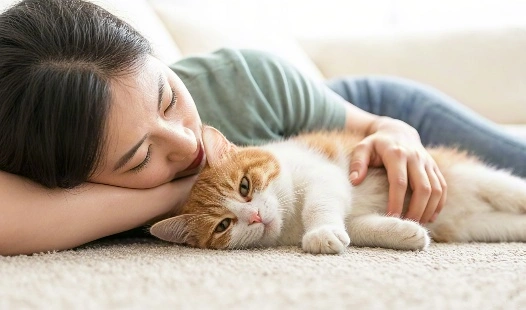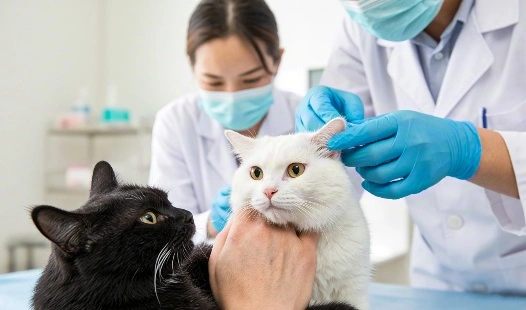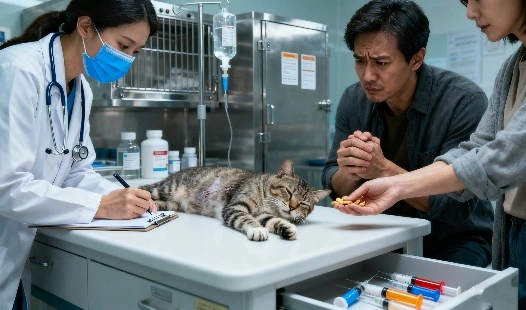What signs show your cat is recovering from FIP with GS 441524?
Physical examination findings during recovery
For a long time, feline infectious peritonitis (FIP) was thought to be a very dangerous and even deadly illness. Many cat owners, however, are already seeing incredible recoveries thanks to the advent of GS 441524 as a potential therapy option. This post will go over the main indicators that show your cat is making progress toward a full recovery from FIP after receiving GS-441524 treatment.
|
|
|
|
Physical examination findings during recovery
As cats begin to respond positively to GS-441524 treatment, several physical changes become apparent. These improvements are crucial indicators of the cat's progress in fighting FIP.
Resolution of effusion in wet FIP cases
One of the most notable signs of recovery in cats with wet FIP is the reduction and eventual disappearance of effusion (fluid accumulation) in the chest or abdomen. This change is often dramatic and can be observed within the first few weeks of treatment.
Improvement in ocular and neurological symptoms
Cats with ocular or neurological forms of FIP may show gradual improvement in related symptoms. This can include reduced inflammation in the eyes, improved coordination, and fewer seizures or other neurological abnormalities.
Weight gain and muscle mass improvement
As the cat's overall health improves, a steady increase in weight and muscle mass becomes evident. This is particularly noticeable in cats that were severely underweight or had significant muscle wasting prior to treatment.
Appetite and energy level improvements
The recovery process with GS 441524 often brings about significant changes in a cat's appetite and energy levels, which are key indicators of improving health.
Increased food intake and interest in meals
As cats begin to feel better, their appetite typically improves dramatically. Owners often report that their cats become more enthusiastic about mealtimes and may even request food more frequently.
Return of playfulness and normal activity levels
A recovering cat will gradually show increased interest in play and interaction. This return to normal feline behaviors is a positive sign that the cat is feeling better and regaining strength.
Improved grooming habits
Cats that were too ill to groom themselves properly may start to pay more attention to their coat. This resumption of normal grooming behavior is an encouraging sign of recovery.
|
|
|
|
Normalization of blood work parameters
Regular blood tests are crucial for monitoring a cat's response to GS 441524 treatment. Several key parameters tend to normalize as the cat recovers from FIP.
Improvement in complete blood count (CBC) values
As the cat's health improves, various CBC parameters begin to normalize. This includes:
- Increase in red blood cell count and hematocrit, addressing anemia
- Normalization of white blood cell count, indicating reduced inflammation
- Improvement in platelet count, if it was previously low
01
Normalization of liver enzyme levels
Liver enzymes such as ALT (alanine aminotransferase) and AST (aspartate aminotransferase) often return to normal ranges as the cat recovers. This indicates improved liver function and reduced inflammation.
02
Decrease in globulin levels
High globulin levels are characteristic of FIP. As the cat responds to treatment, globulin levels typically decrease, approaching normal ranges. This is a crucial marker of recovery.
03
Improvement in albumin to globulin (A:G) ratio
The A:G ratio, which is often low in cats with FIP, tends to increase and normalize during successful treatment. This is an important indicator of the cat's improving immune status.
04
Conclusion
The journey of recovery from FIP using GS-441524 is often marked by a combination of physical improvements, behavioral changes, and normalization of blood work parameters. While each cat's recovery process may vary, these signs collectively provide hope and encouragement for cat owners and veterinarians alike, who must also consider the GS-441524 cost when planning and sustaining treatment.
It's important to note that recovery is typically gradual, and consistent monitoring is crucial throughout the treatment period. Regular veterinary check-ups and blood tests are essential to track progress and adjust treatment as needed.
The promising results seen with GS-441524 have transformed the outlook for cats diagnosed with FIP, offering a chance at recovery from what was once considered an invariably fatal disease. As research continues and more cats receive treatment, our understanding of the recovery process and long-term outcomes will undoubtedly improve.
FAQ
1. How long does it typically take to see signs of recovery with GS-441524 treatment?
While individual responses can vary, many cat owners report seeing initial improvements within the first 1-2 weeks of treatment. However, full recovery often takes 12 weeks or more of consistent treatment.
2. Can a cat relapse after showing signs of recovery from FIP?
Yes, relapses can occur, especially if treatment is stopped too early. It's crucial to complete the full recommended course of treatment, even if the cat appears to have recovered fully.
3. Are there any side effects of GS-441524 treatment that cat owners should be aware of?
The most common side effect is injection site reactions, which can cause discomfort. Some cats may also experience temporary gastrointestinal upset. Serious side effects are rare, but any concerns should be discussed with a veterinarian.
Partner with BLOOM TECH for High-Quality GS-441524 Supply
If you have decided to treat your cat's FIP with GS-441524, it is essential that you choose a trustworthy supplier. With pharmaceutical-grade goods that are up to par, BLOOM TECH stands out as a top GS-441524 supplier. You can trust that the GS-441524 you get for your cat will be consistent, pure, and effective, and you can also have transparency regarding the GS-441524 cost, since we are dedicated to providing you with the best product possible.
Trustworthy product quality is guaranteed by BLOOM TECH, thanks to their state-of-the-art GMP-certified manufacturing facilities and more than a decade of expertise in organic synthesis. Cat owners and veterinarians alike love our products because of our low prices, dependable shipping, and detailed instructions.
Don't compromise on your cat's health. Choose BLOOM TECH for your GS-441524 needs and give your feline friend the best chance at recovery. Contact us today at Sales@bloomtechz.com to learn more about our products and how we can support your cat's treatment journey.
References
1. Pedersen, N.C., et al. (2019). Efficacy and safety of the nucleoside analog GS-441524 for treatment of cats with naturally occurring feline infectious peritonitis. Journal of Feline Medicine and Surgery, 21(4), 271-281.
2. Addie, D.D., et al. (2020). Feline infectious peritonitis. ABCD guidelines on prevention and management. Journal of Feline Medicine and Surgery, 22(11), 1028-1048.
3. Murphy, B.G., et al. (2018). The nucleoside analog GS-441524 strongly inhibits feline infectious peritonitis (FIP) virus in tissue culture and experimental cat infection studies. Veterinary Microbiology, 219, 226-233.
4. Dickinson, P.J., et al. (2020). Antiviral treatment using the adenosine nucleoside analogue GS-441524 in cats with clinically diagnosed neurological feline infectious peritonitis. Journal of Veterinary Internal Medicine, 34(4), 1587-1593.

Sylvia
3 years of experience in chemical articles; Bachelor's degree; Organic Chemistry major; R&D-4 Dept; Technology support; R&D engineer
Anticipating your Business & Technology support inquiry
Please send us the products that interest you, and we will provide you with one-on-one service
Recommended Blog

The Best Treatments for FIP in Cats: What You Need to Know









_副本_1758519070270.webp)
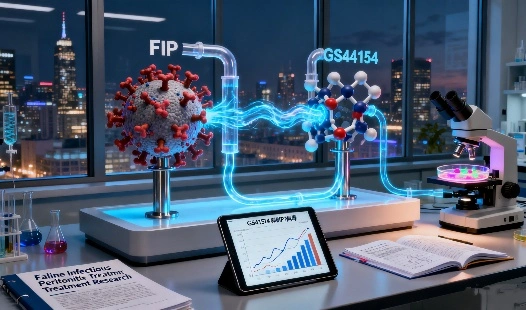
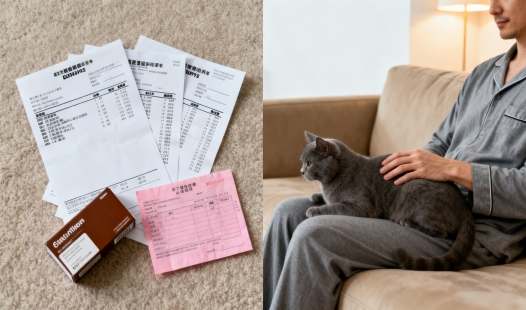
_副本_1758779278502.webp)
